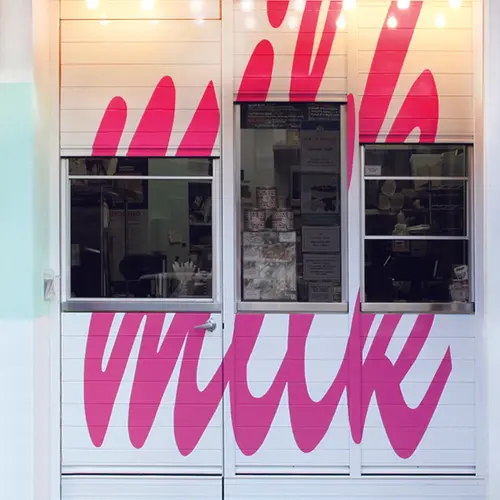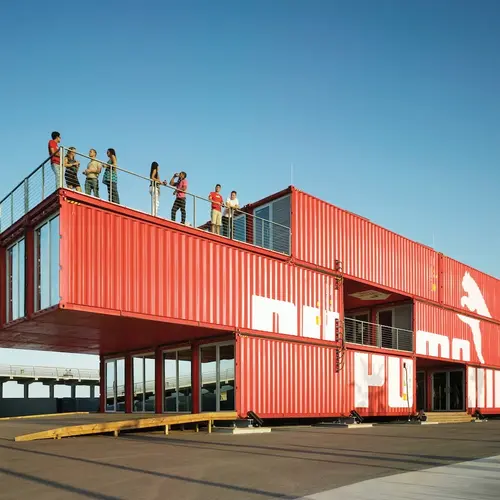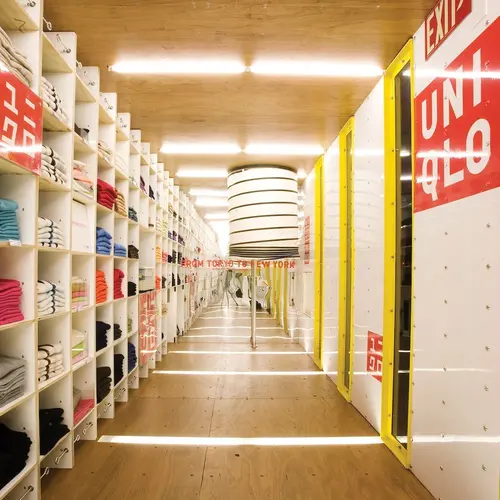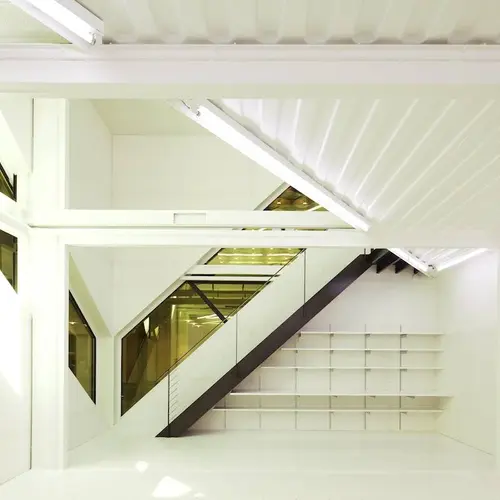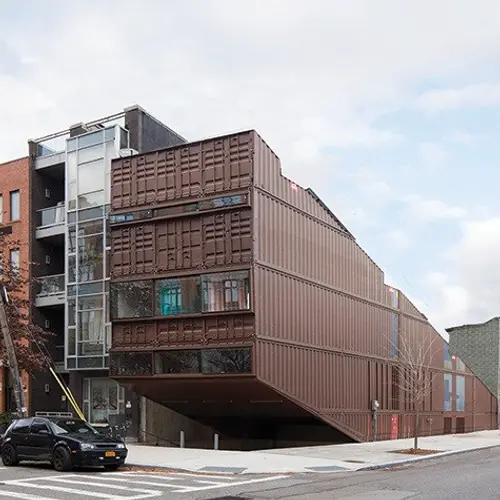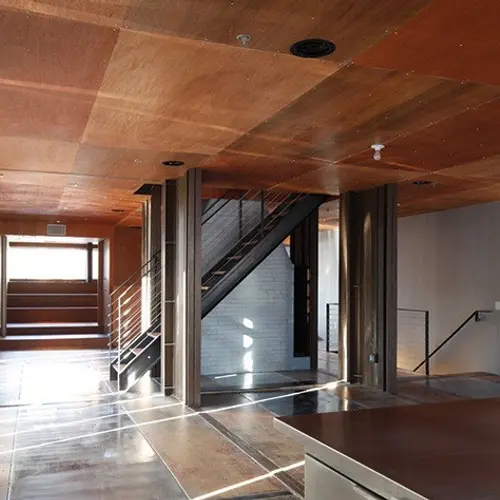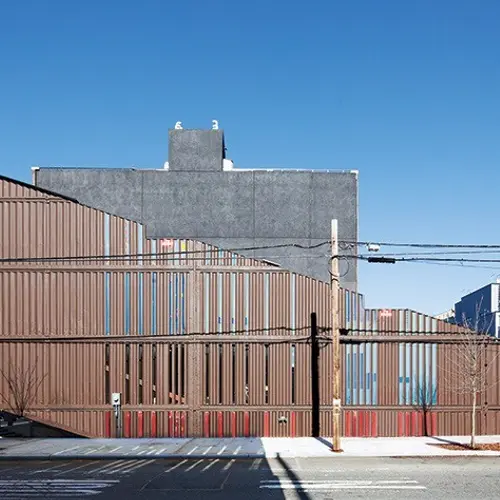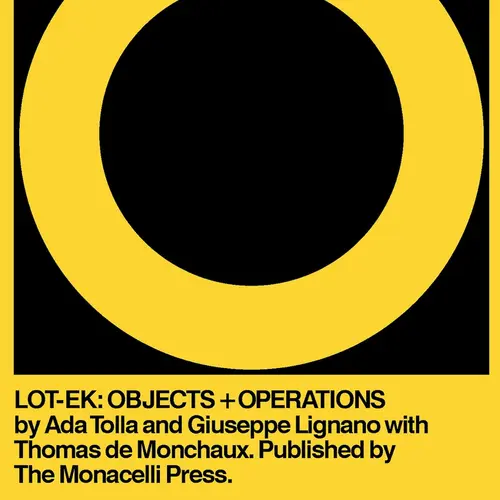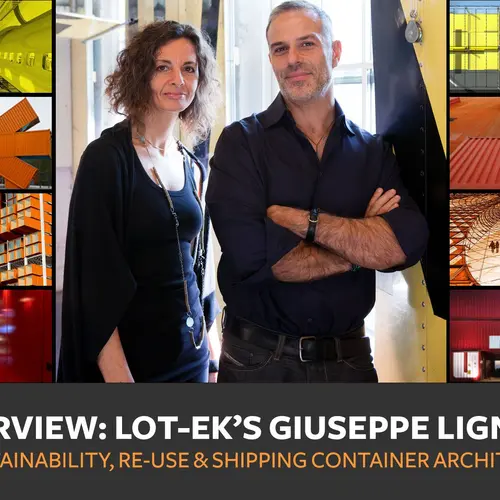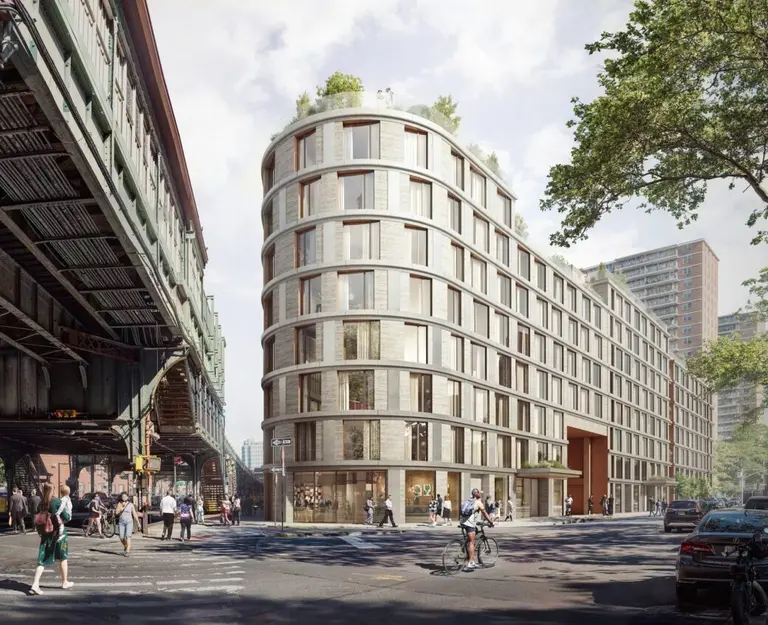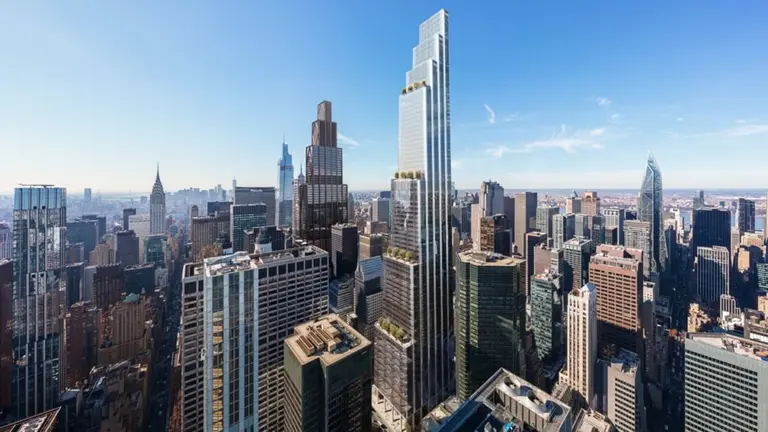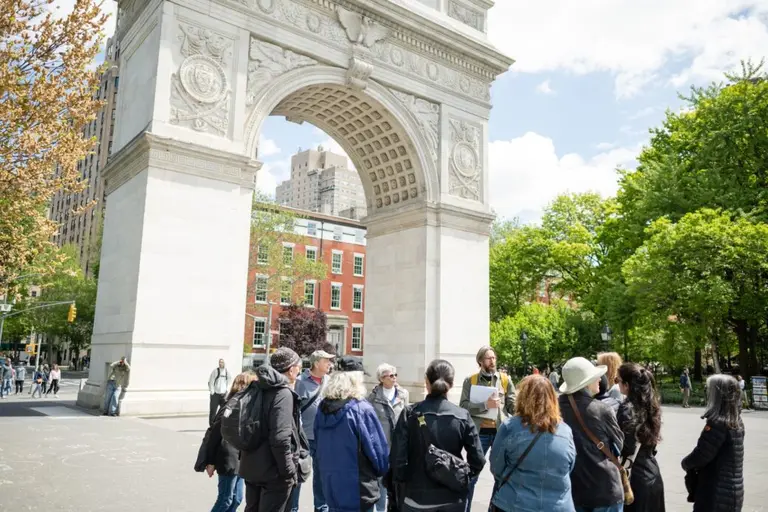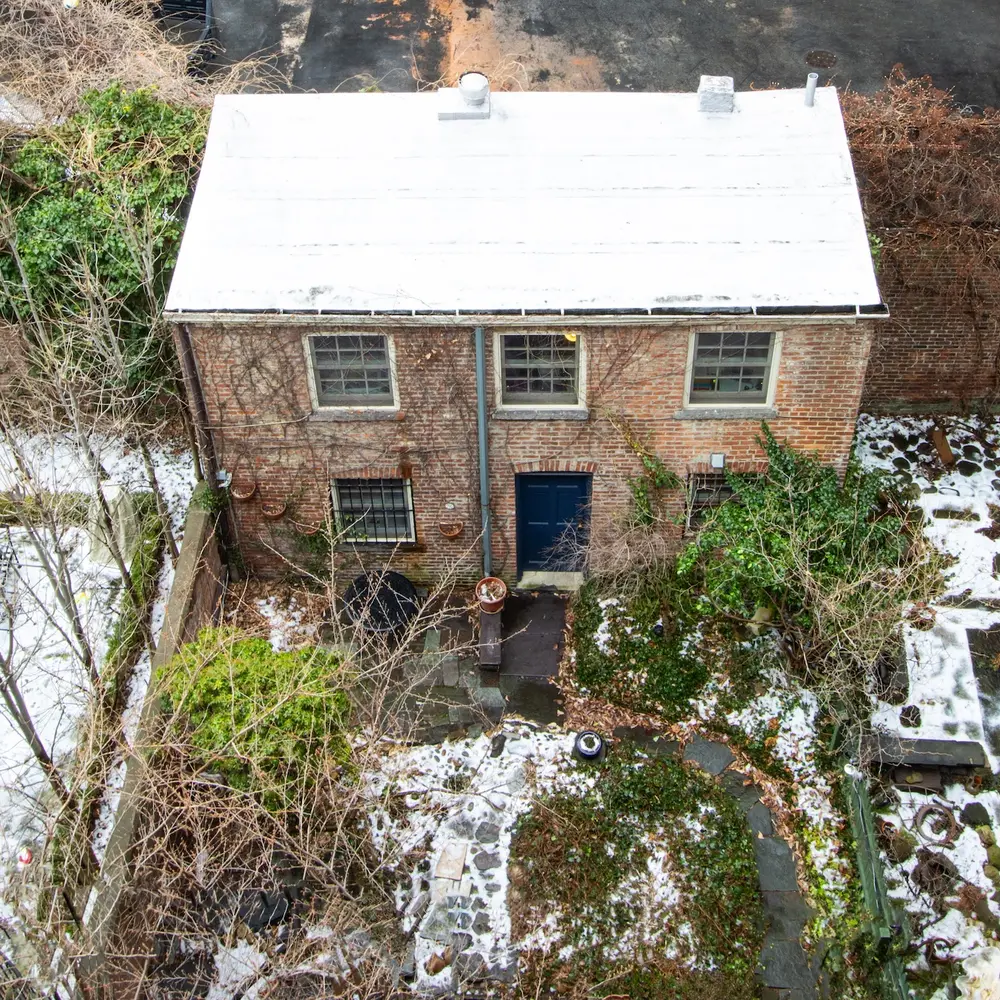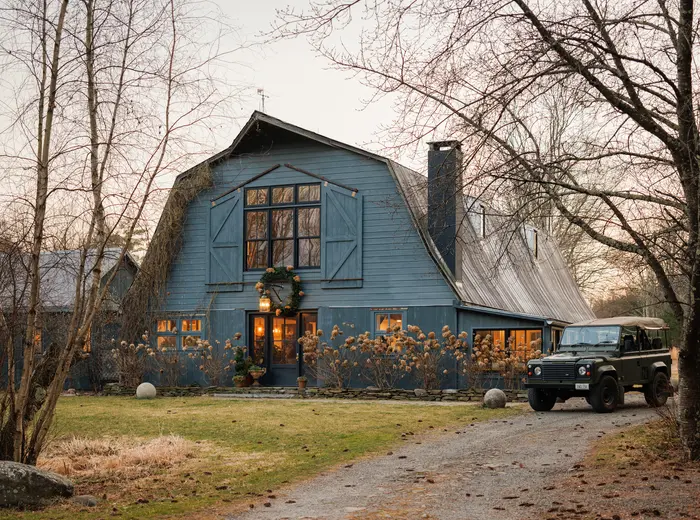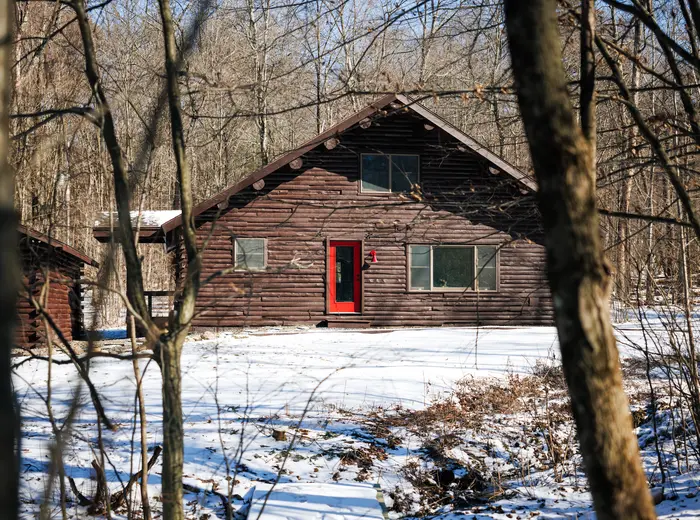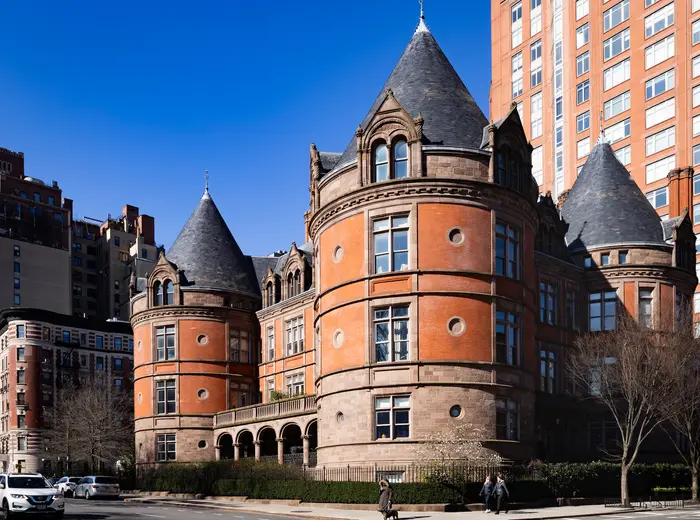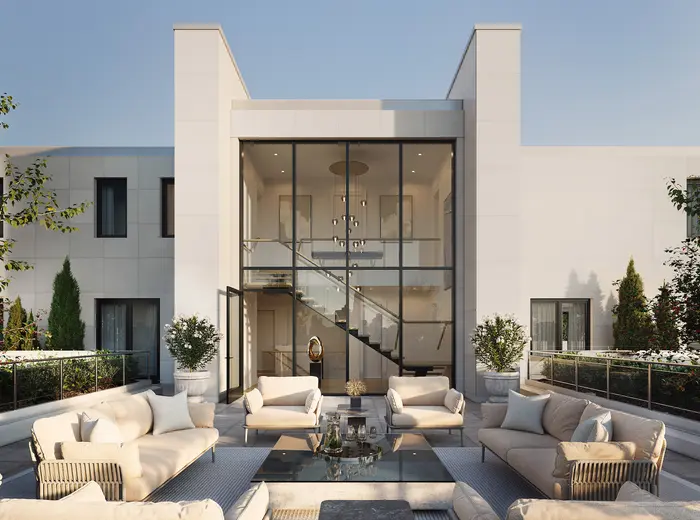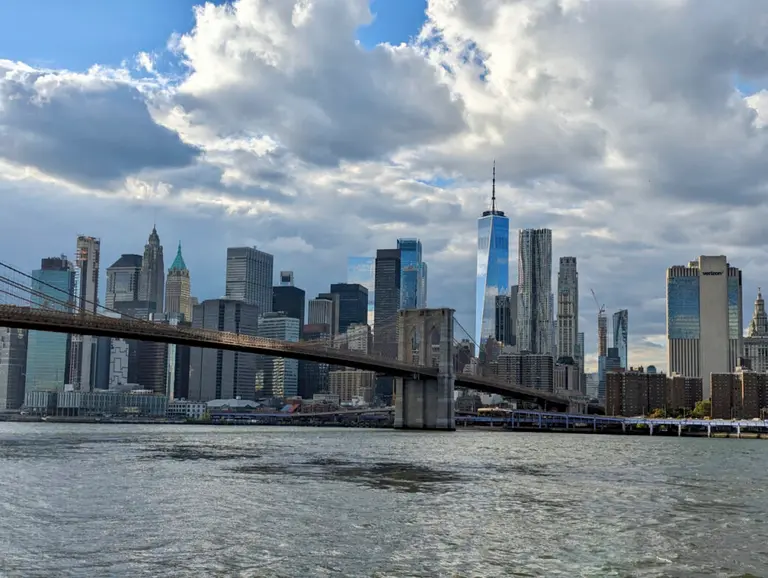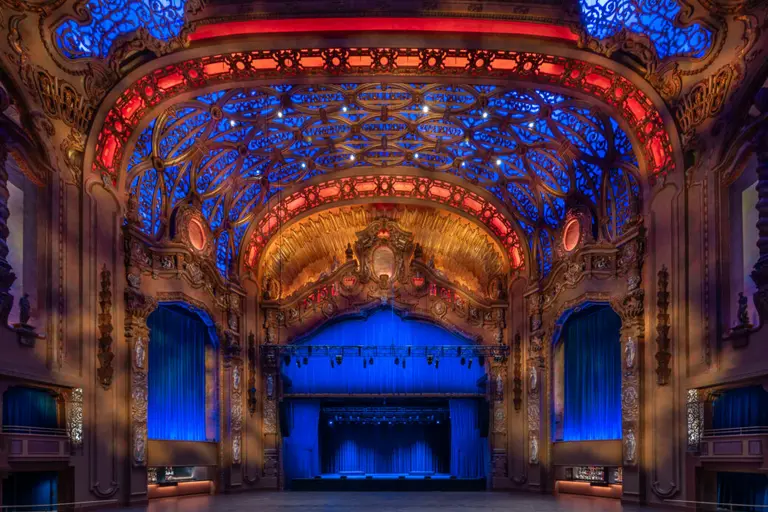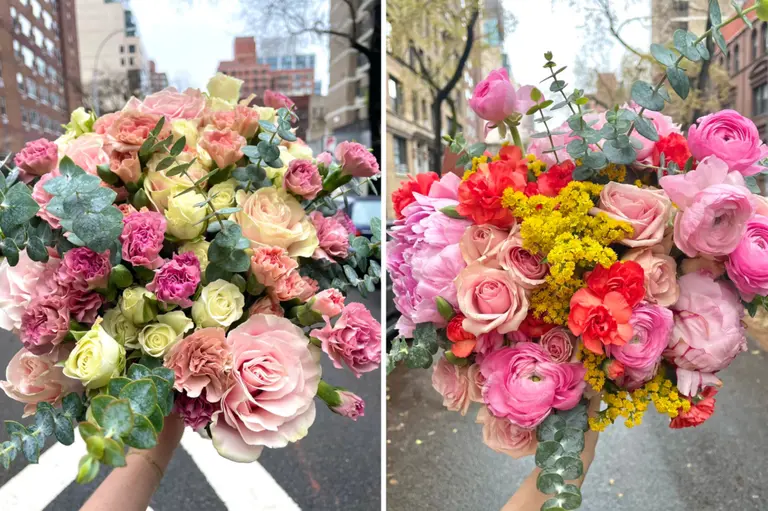INTERVIEW: LOT-EK’s Giuseppe Lignano talks sustainability and shipping container architecture
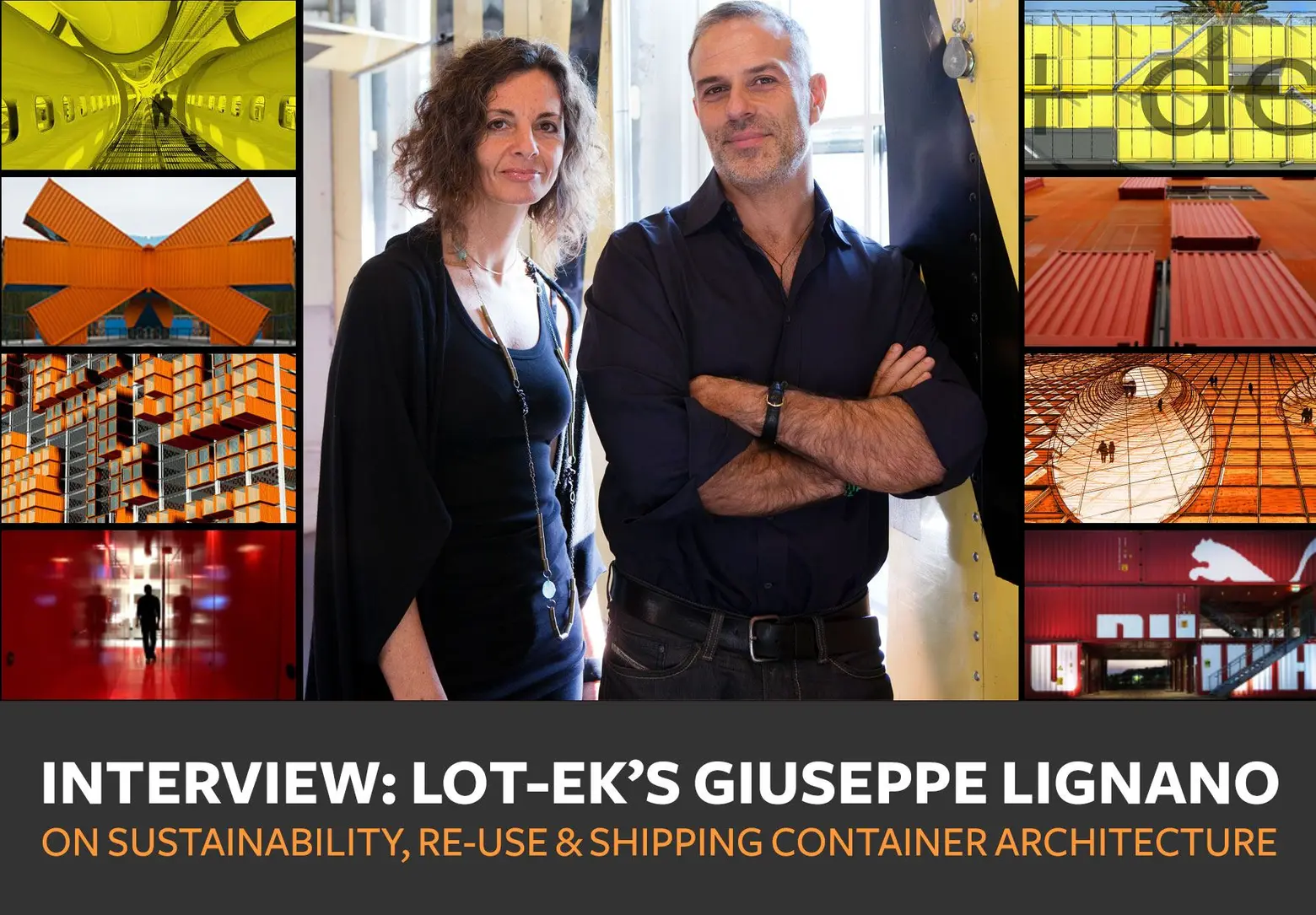
After completing architecture school at Universita’ di Napoli, Italy, Ada Tolla and Giuseppe Lignano fell in love with New York City, deciding in 1995 to establish an innovative firm in Manhattan called LOT-EK. Early experiments in the art world grew into a substantial architecture practice, but their philosophy has always been the same: Both Ada and Giuseppe are focused on a concept they call “up-cycling,” taking existing objects and elevating them through art, design, and architecture. The firm has done its most innovative work re-using shipping containers and received a wave of attention this year for a Brooklyn residential project that utilized 21 shipping containers in surprising, stunning ways.
The firm has just released its second monograph, LOT-EK: Objects and Operations, a photo-heavy showcase of dozens of projects the firm produced around the world over the past 15 years. “LOT-EK is a design practice that believes in being unoriginal, ugly, and cheap,” the book states. “Also in being revolutionary, gorgeous, and completely luxurious.” With 6sqft, co-founder Giuseppe Lignano talks about the early days of running a firm and waiting tables in 1990s New York, explains the firm’s philosophy behind sustainability and re-use, and discusses the inspiration behind their notable Williamsburg project.
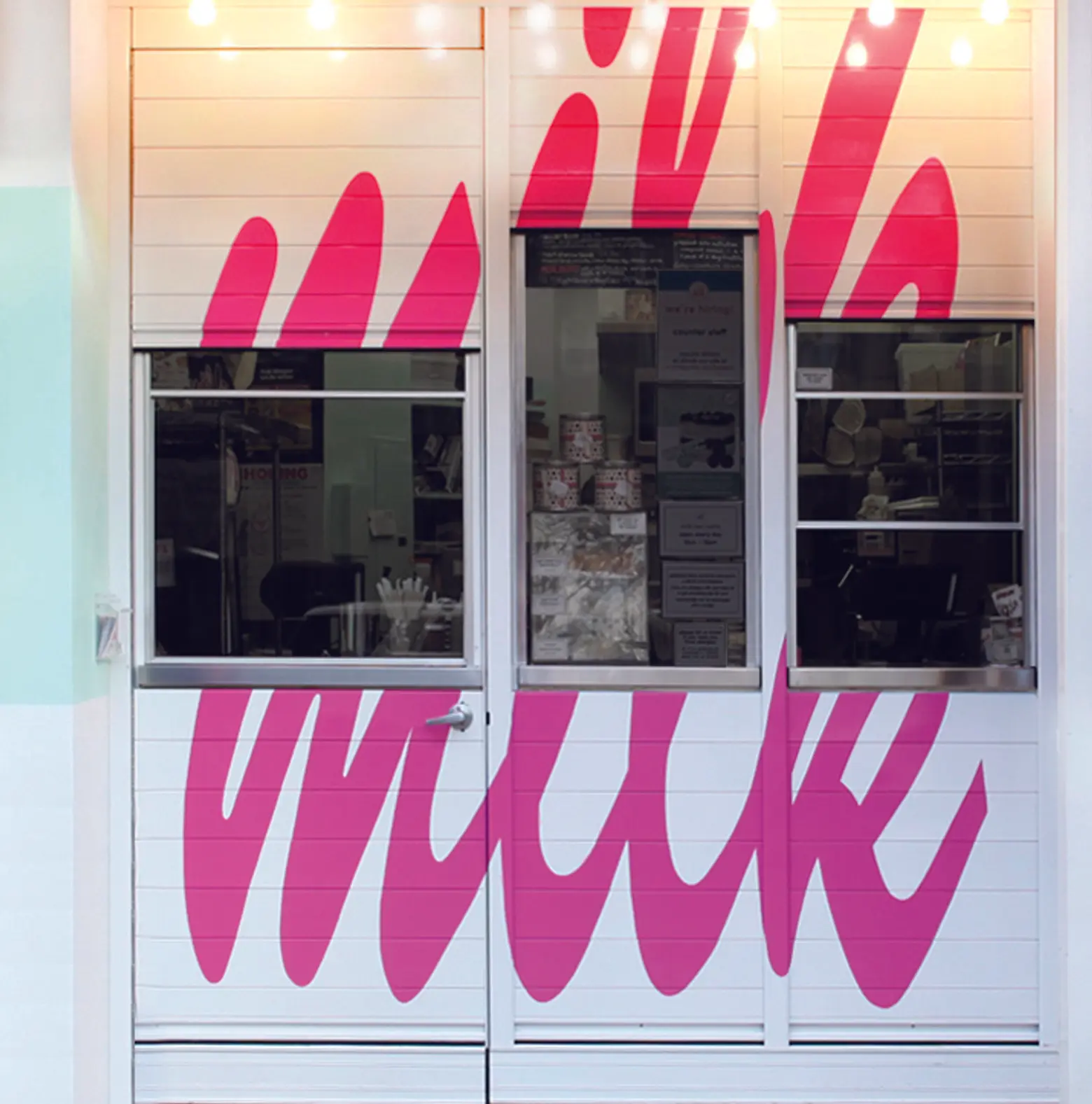 Momofuku Milk Bar’s first retail store in NYC, made of moveable rolling panels repurposed to create the interface between the prep area and customers, photo by Danny Bright
Momofuku Milk Bar’s first retail store in NYC, made of moveable rolling panels repurposed to create the interface between the prep area and customers, photo by Danny Bright
Tell us about when you and Ada decided to establish LOT-EK.
Giuseppe: We’re going all the way back, great! Ada and I graduated from the School of Architecture, University of Naples, back in 1989. Then we traveled extensively right after graduation through the U.S. and fell in love with New York in particular. We applied for a scholarship at Columbia University, which we both won, miraculously.
We were already formulating the basic idea of LOT-EK—the idea of making architecture with industrial objects and systems not intended for architecture, and to do that at all scales. We were really interested in the over-population of manmade objects and systems that you see everywhere, especially in the United States. There’s a lot of stuff we don’t want to see, but it’s there—like antennas, fire escape ladders. We design without those things, but they come in anyway. We were interested in what we began to call “the artificial nature”… anonymous objects we thought had an integrity in the way they were designed, in such an anonymous way. We were interested in the way these objects come about.
The dissertation we wrote at the end of our visiting scholarship was based on the idea of what it means to scan urban space and its artificial nature, and also how we could re-use it and re-appropriate it.
In the beginning, we were working as artists, meaning we were making things with our hands. It was just the two of us, with some helpers. Through the ’90s, we were working on our own, waiting tables, and really making things: small environments, objects. Then the art world started embracing us. So it was first really an art practice with architecture as its topic.
Then we started doing some interior work, always based on the idea of “up-cycling.” That’s what we called it instead of “recycling.” With recycling, you take a shipping container, melt it down to the steel, and make something else with the steel. With up-cycling, you use the object for what it is and modify it.
We struggled a little bit as the scale of work increased. Once you’re designing buildings, it’s so much more time intensive. But we still want to do all sorts of scales. We still work with artists, we’ve done exhibition design, interior design, and a lot of architectural design with renovations and ground-up building.
How big is the firm today?
Giuseppe: Between 15 and 20. It’s very intimate, we’re a family.
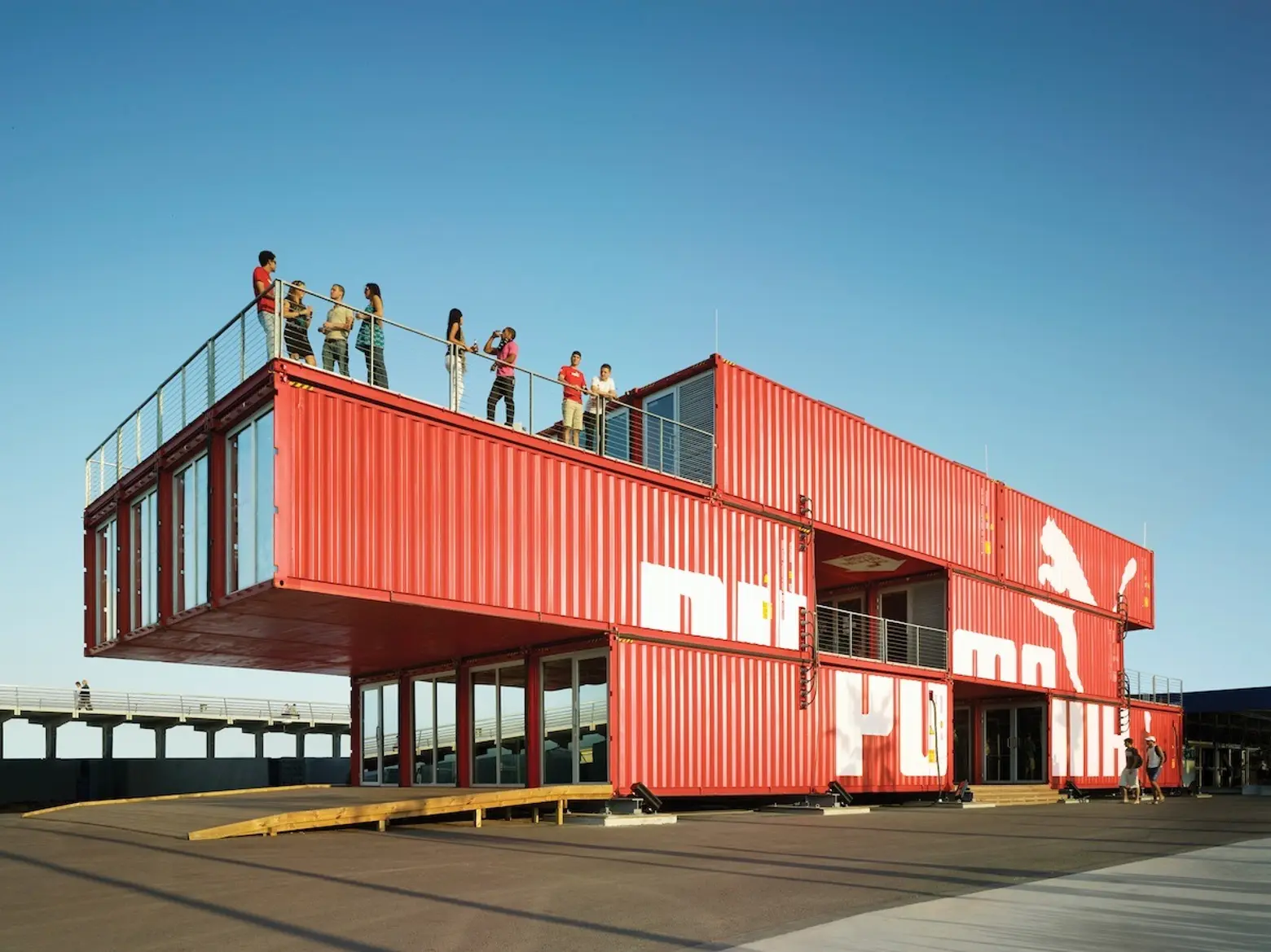 24 shipping
containers were retrofitted and transformed into Puma City,
a transportable retail and event venue that travels around
the world, photo by Danny Bright
24 shipping
containers were retrofitted and transformed into Puma City,
a transportable retail and event venue that travels around
the world, photo by Danny Bright
There’s a quote in the book that I love—it says that LOT-EK does “radical things with familiar objects.” That is so evident in your work with shipping containers. What’s so appealing about the shipping container?
Giuseppe: We just love the object per se. It’s interesting because of its proportions, the texture, the way it’s put together, the corrugated metal, the details. We fell in love with it back in 1992, driving around New Jersey—which has always been our playground—on a Sunday in February. It was one of those sharp New York days, blue skies, and we stumbled upon a container depot. There was nobody there. We drove through and it felt like a city. We thought it would be amazing to play with this object, and then we discovered how strong it is from a structural point of view. I call it the “mule of our civilization” because it transports everything.
We’ve always thought of LOT-EK as a sustainable practice—like both of our grandfathers would take food from the night before and make a new meal the next day. We were curious if this could be an alternative and different way to think about sustainability.
Another thing we discovered over the years, especially in the U.S., is that shipping containers arrive here and stop. They don’t go anywhere because of the imbalance of trade between east and west. The boxes stay here like when you buy a pair of shoes and don’t send back the box, so they tend to accumulate. And most of the time, they have only been used once. That makes the idea of using the containers even more sustainable, to re-use objects made of 100 percent corten steel—a valuable material—just sitting in a port, en masse.
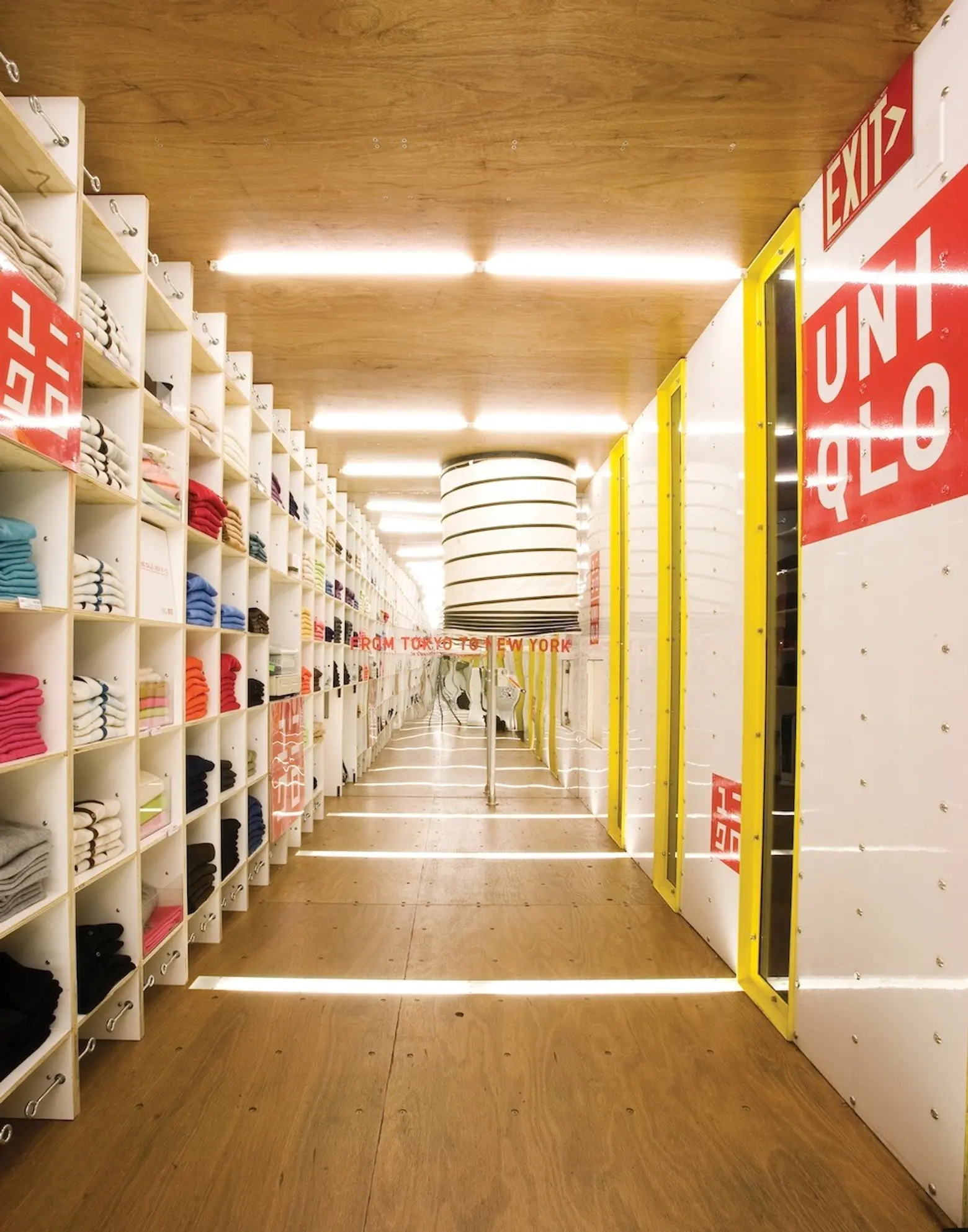 Two 20-foot containers toured New York City to introduce the Uniqlo brand to the United States, moving through different city neighborhoods, photo by Danny Bright
Two 20-foot containers toured New York City to introduce the Uniqlo brand to the United States, moving through different city neighborhoods, photo by Danny Bright
You’ve taken the concept of up-cycling and applied it to everything from high-end home renovations, to commercial properties, to art. Were you surprised in the flexibility of this idea and where you could apply it?
Giuseppe: No, because we always thought it was a matter of intention. Unfortunately, in architecture, we always think things should be brand new. But in art, we re-use everything. Intention is the most important thing. When we think of up-cycling, the word “up” is really “up.” You elevate this object. That was always our goal. Even in defining a new sense of luxury… we could define beauty and luxury in a way that’s not about ebony or marble or shiny chrome, it’s about seeing the grit of our civilization with pride, not with shame.
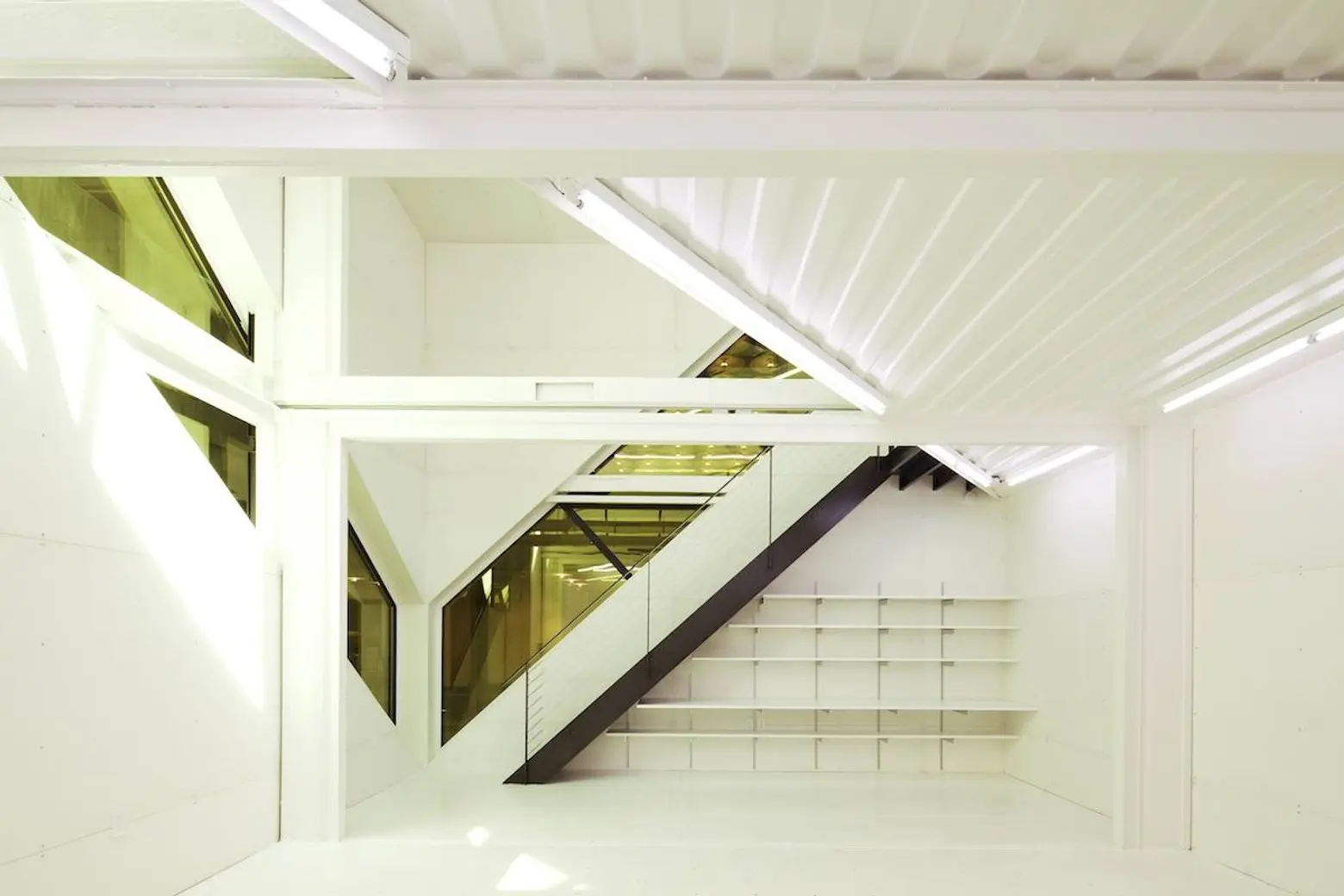 The Whitney Studio, which was located in the Sculpture Court of the
Marcel Breuer building when it belonged to the Whitney Museum, photo by Danny Bright
The Whitney Studio, which was located in the Sculpture Court of the
Marcel Breuer building when it belonged to the Whitney Museum, photo by Danny Bright
As you worked on the book, did it give you the opportunity to look at how the firm has evolved in its practice?
Giuseppe: An earlier monograph of ours was from 2002, so we hadn’t done one in 15 years. We had a longer perspective and could look at how the practice grew in scale, but also how our mind has evolved in the way we do this. It’s called “Objects and Operation” because, on one side, there are the objects, that’s our point of departure, but on the other side, there’s the operation, what makes those objects into buildings. It’s both technical and an artistic endeavor. But in the beginning, we were much shyer—we were learning and our minds had to grow.
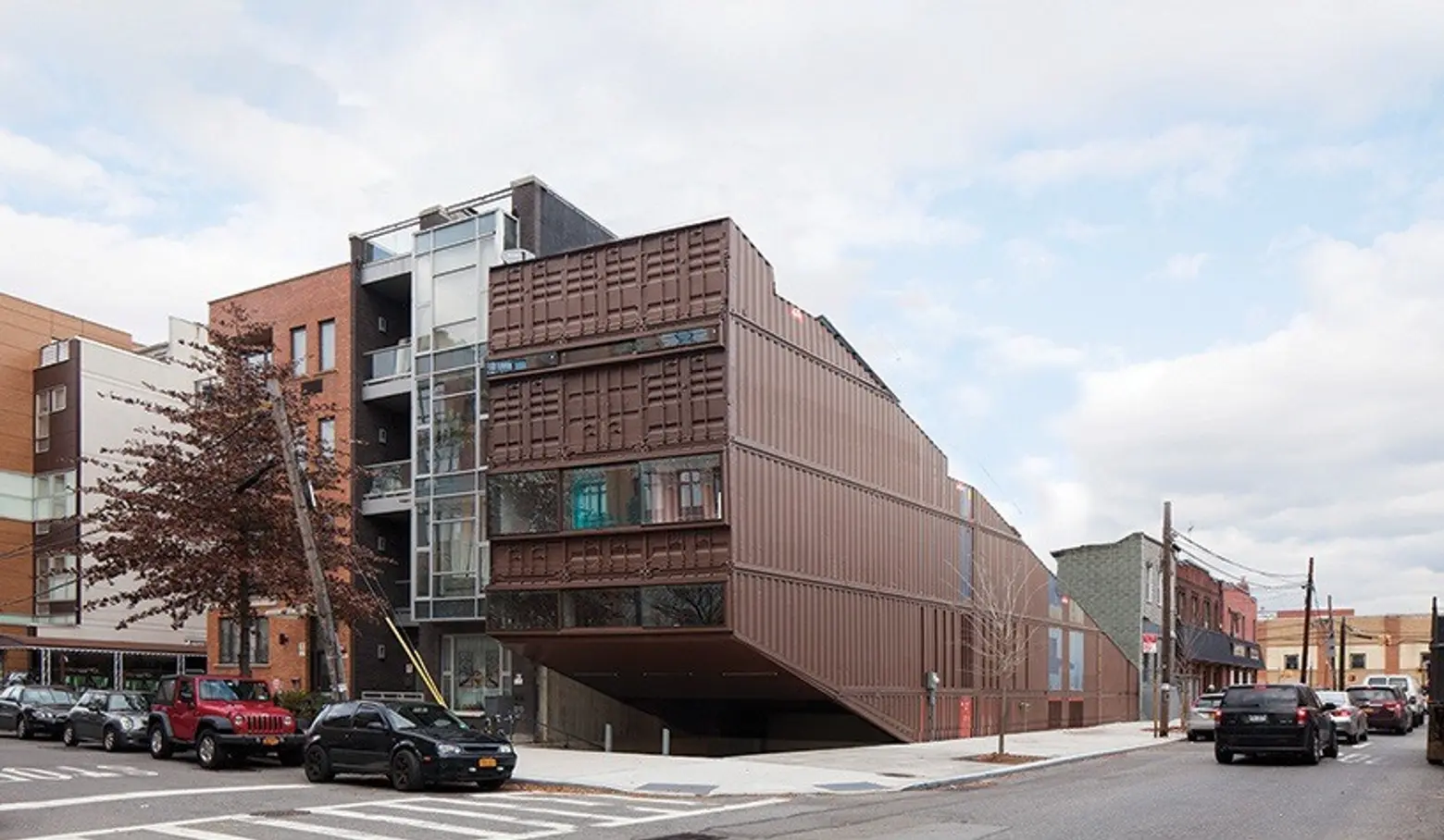 Carroll House, courtesy of LOT-EK
Carroll House, courtesy of LOT-EK
So what’s a particularly memorable project in New York City?
Giuseppe: Well, we have to talk about Carroll House. It was a very important project for us that took a long time to design and put together. It’s “proof of the pudding,” a “proof of concept,” for sure. Especially in New York City, it’s very tough from a code point of view, and financial point of view.
That project got a great deal of attention. Did the firm have a lot more requests for residential work after that?
Giuseppe: Yes, for sure. Ever since it went up, we started getting calls. People thought it was an apartment building, and they wanted to live in there. We got an incredible reaction for that building, for sure.
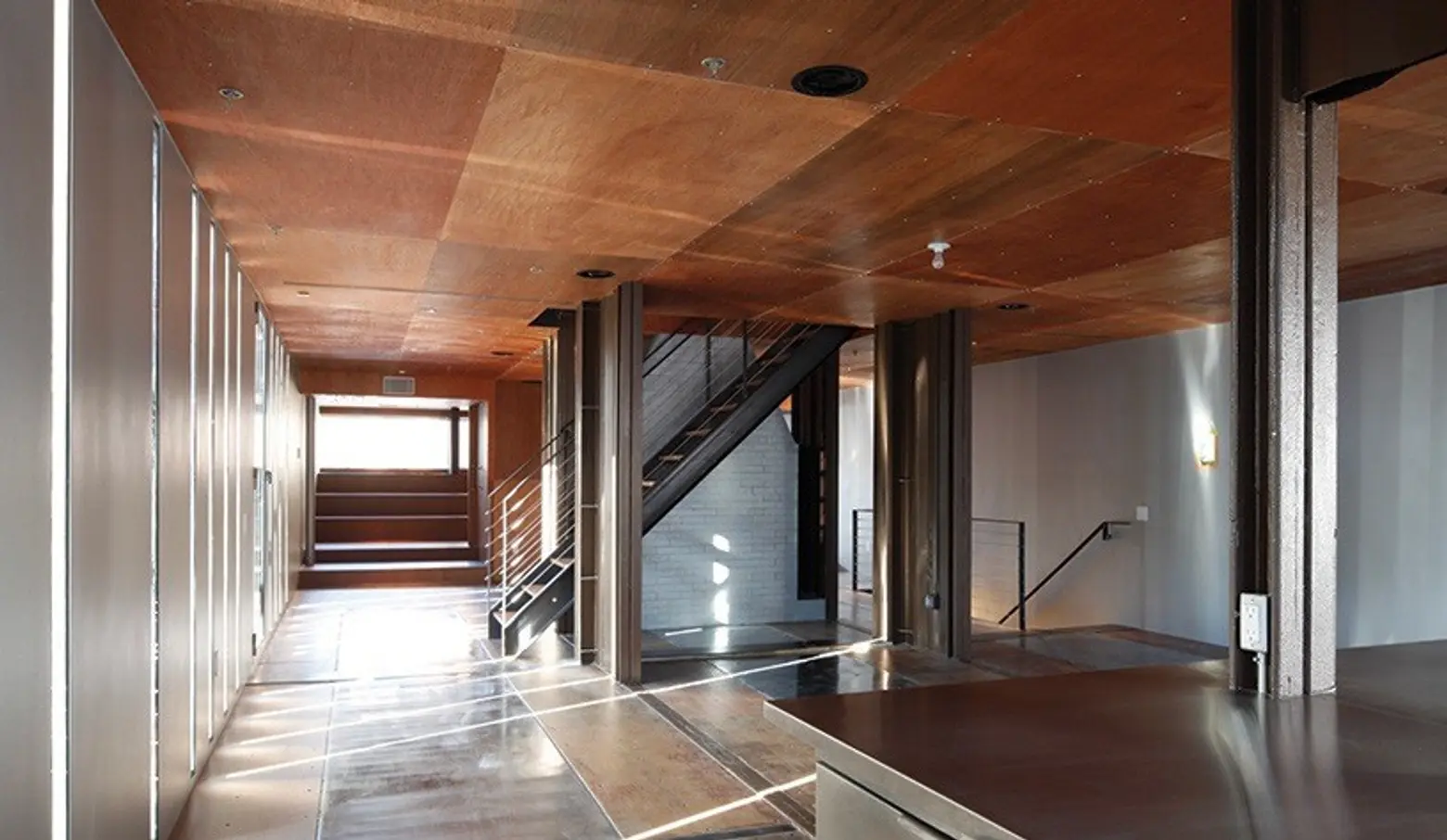 Carroll House, courtesy of LOT-EK
Carroll House, courtesy of LOT-EK
Much of Brooklyn has a specific aesthetic in the streets and the architecture. What inspired you to look at things a little differently for this project?
Giuseppe: We strive to create a sculptural presence for our buildings within the urban reality. A building like Carroll House feels like a giant monolith coming out of the ground. That, for us, is a very important thing—the idea the building can have an almost monumental presence in the city. At the same time, we’re inspired by a much smaller scale, the details, the texture of the building and how it adds to the neighborhood in a new and different way. We’re very sensitive to the fact that when you design a building, you design a piece of the city, especially with Carroll House, on the corner of the block, an important piece of the city. We’re inspired by the city as a mega-object—and seeing buildings as sculptures within the skyline—as well as the one-on-one relationship between the human body and the city.
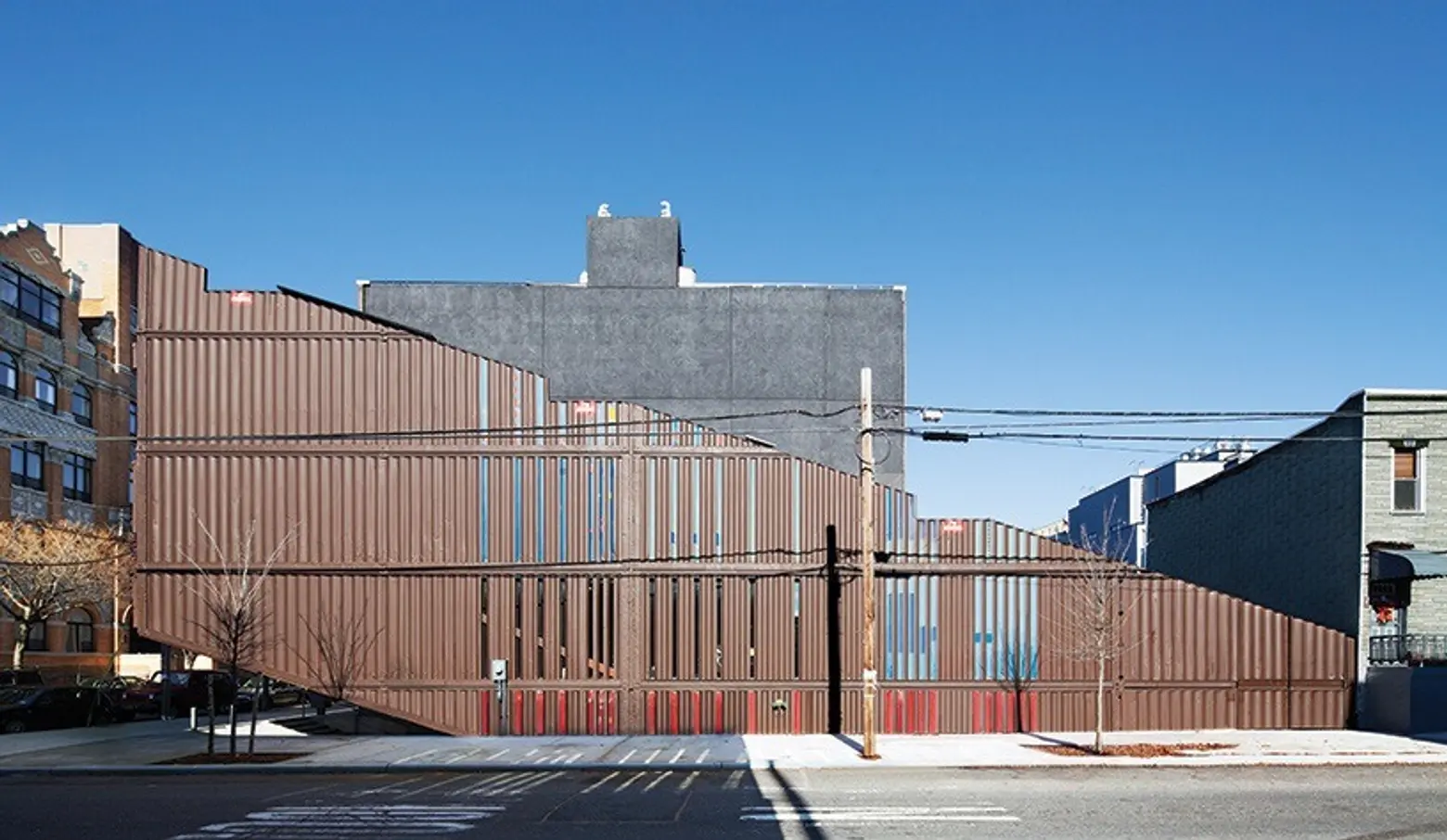 Carroll House, courtesy of LOT-EK
Carroll House, courtesy of LOT-EK
At the moment, what’s your favorite New York neighborhood to walk around and feel inspired?
Giuseppe: We love East Williamsburg, an area with a lot of warehouse buildings that still has a real grit… not the gentrified grit. We love more marginal areas with that gritty, post-industrial character of New York. Along the river, the South Bronx, that’s a very interesting area. We would love to put our hands on one of these neighborhoods in order to change it from within, instead of changing it without. Buildings are being torn down and being replaced by anonymous buildings.
In Johannesburg, South Africa, we have a project we’re very proud of, the largest residential building we’ve ever done. It was with a smart developer who respected the grit of the area and wanted to rejuvenate it from within. It’s a shame we don’t do that in New York. We think you can have the cake and eat it, too. You can do the development but you can do it in a way that you respect what’s there… you can augment it, instead of diminishing it. We have the fantasy of being able to re-envision those areas in a more organic way.
RELATED:
